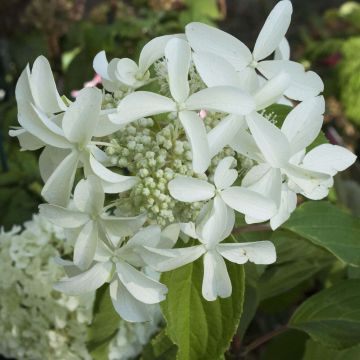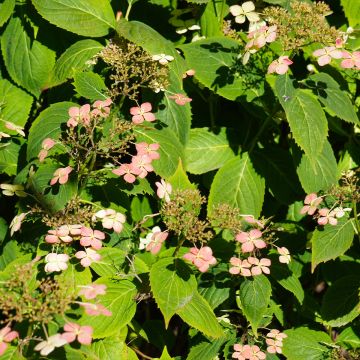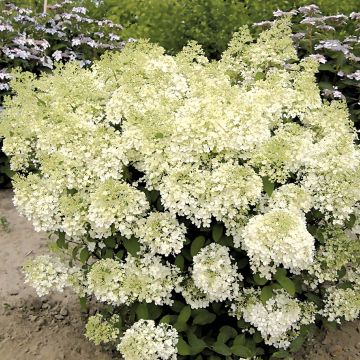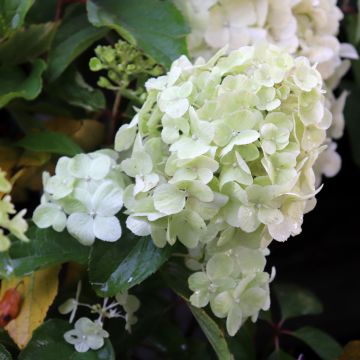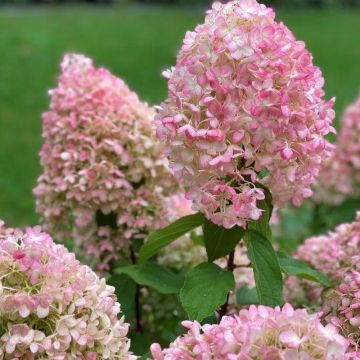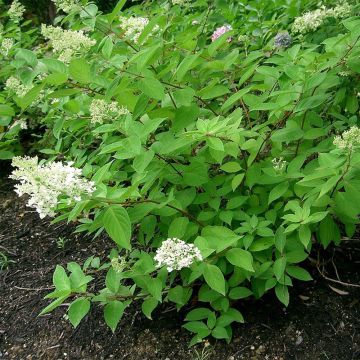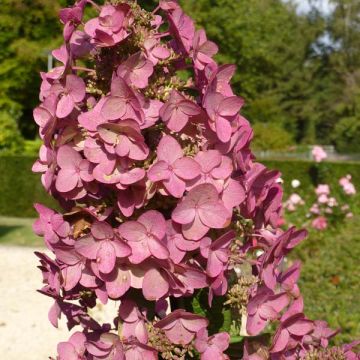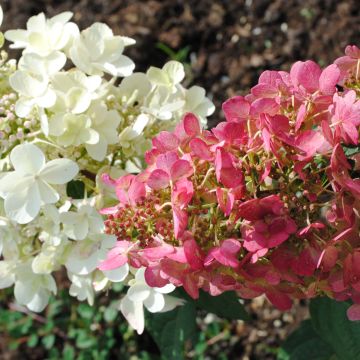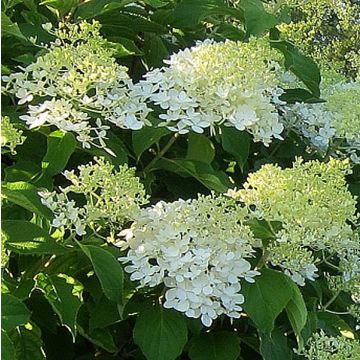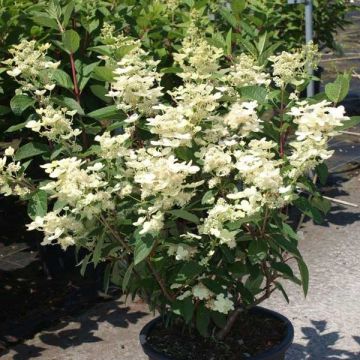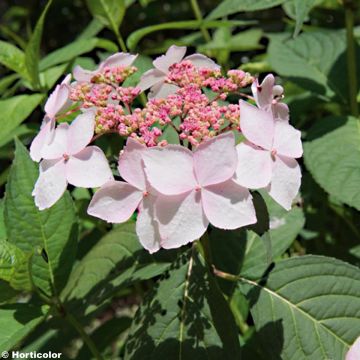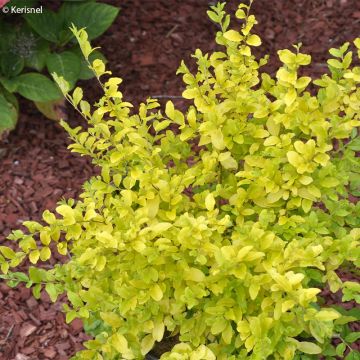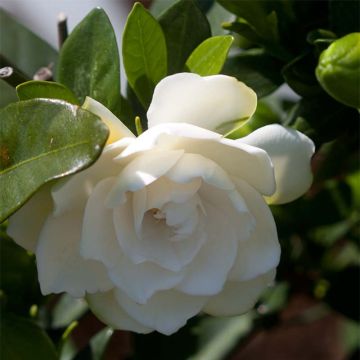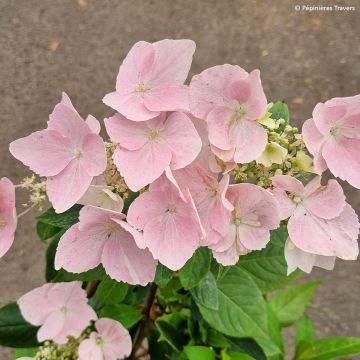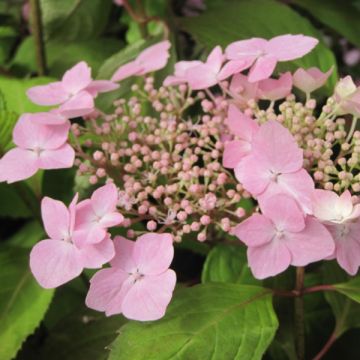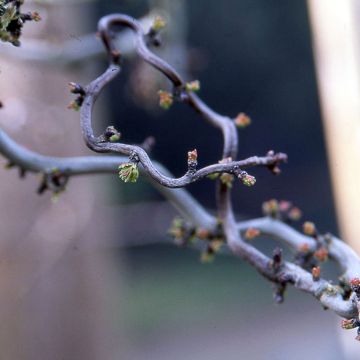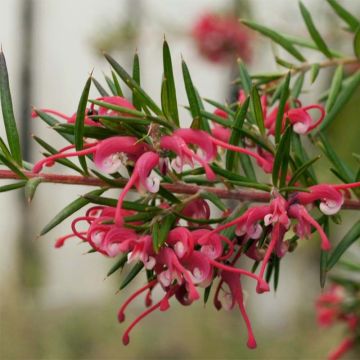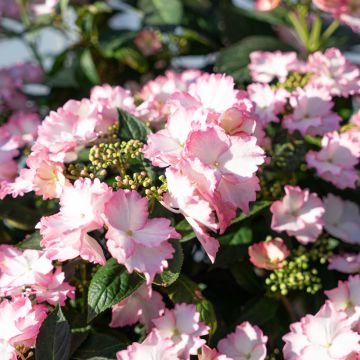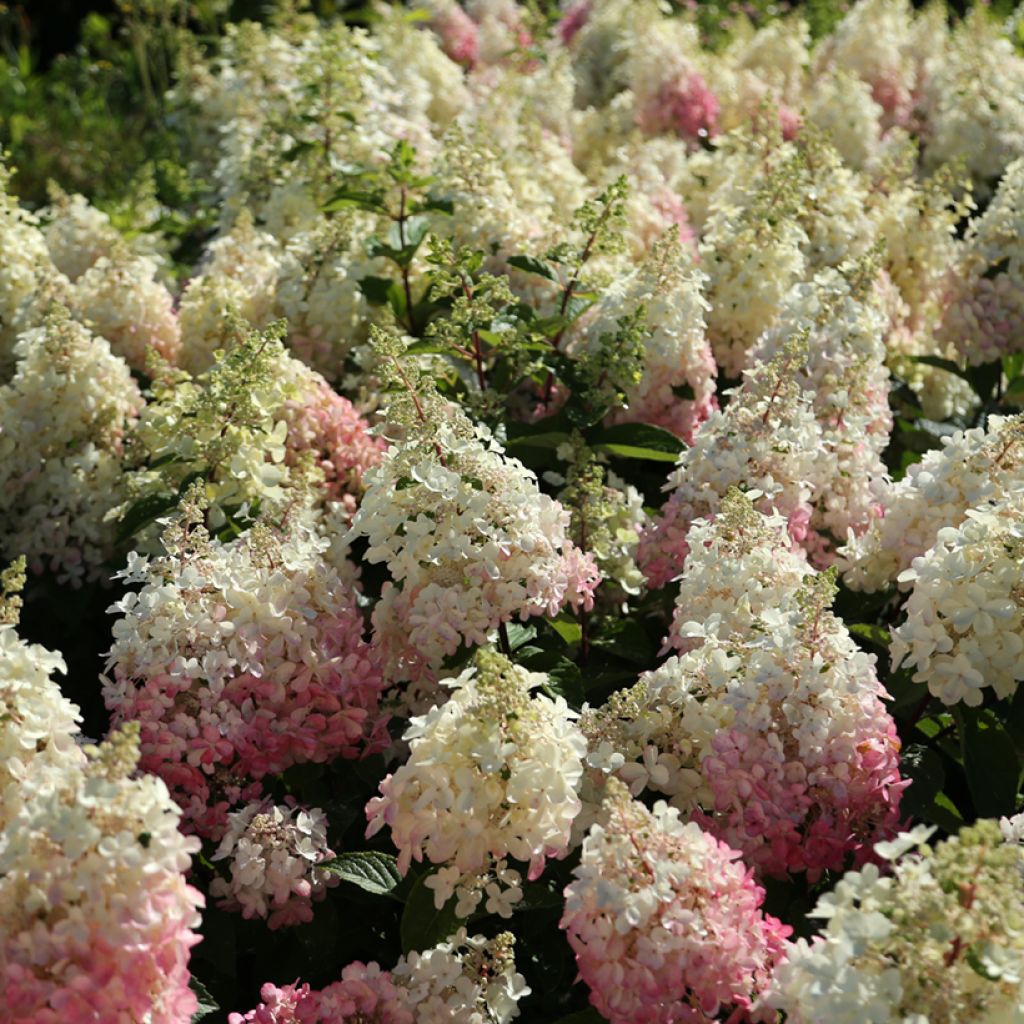

Hydrangea paniculata Candlelight
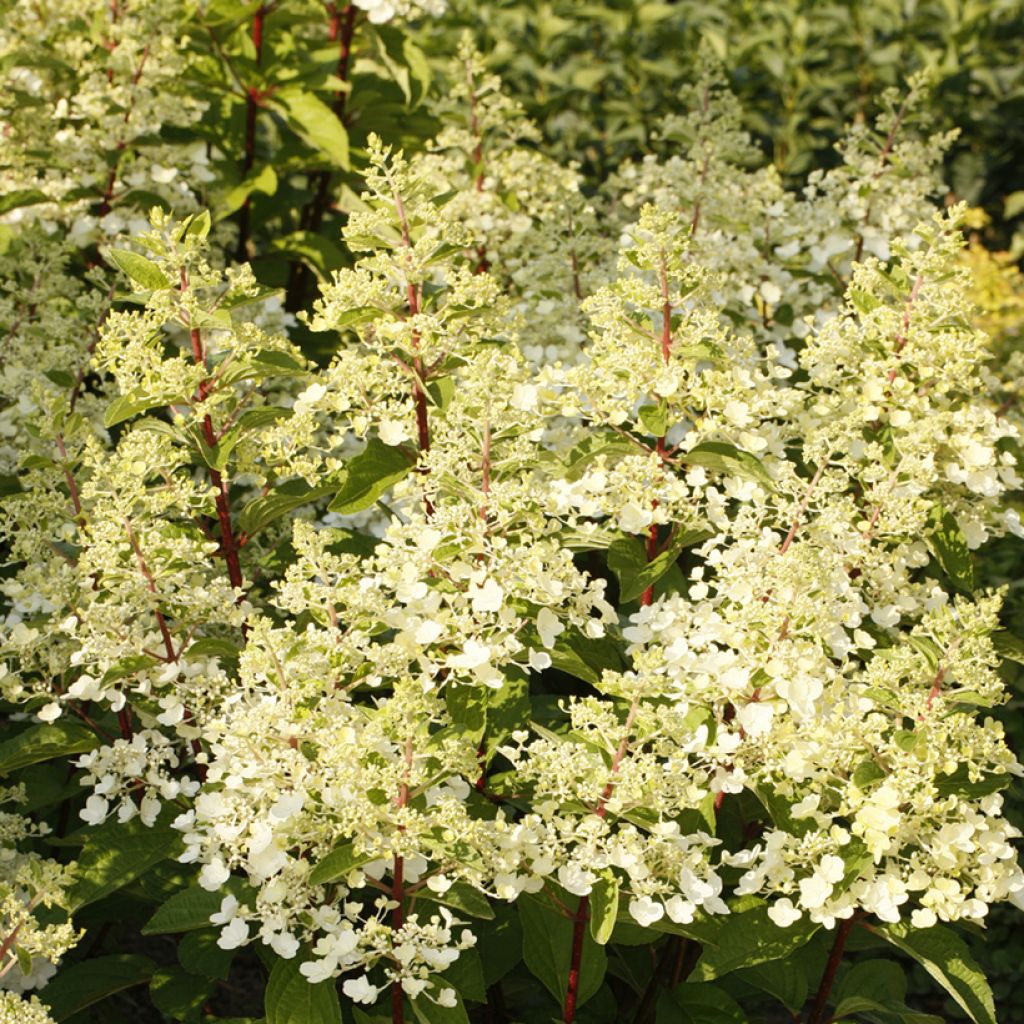

Hydrangea paniculata Candlelight
Hydrangea paniculata Candlelight
Hydrangea paniculata 'HPOPR013’ CANDLELIGHT®
This item cannot be shipped to the selected country
Delivery charge from €5.90
More information
Schedule delivery date,
and select date in basket
This plant carries a 24 months recovery warranty
More information
We guarantee the quality of our plants for a full growing cycle, and will replace at our expense any plant that fails to recover under normal climatic and planting conditions.
From €5.90 for pickup delivery and €6.90 for home delivery
Express home delivery from €8.90.
Does this plant fit my garden?
Set up your Plantfit profile →
Description
Hydrangea paniculata Candlelight is an ideal paniculate hydrangea for creating a small hedge or shrub border. Its sturdy and branching dark red stems bear large conical panicles that gradually change from creamy white to deep pink. The combination of the red stems and the changing flowering is remarkable. This hardy and low-maintenance shrub is easy to grow in many gardens. Its moderate growth also makes it suitable for container cultivation.
Hydrangea paniculata, also known as the Mountain Hydrangea, is a particularly hardy species of hydrangea belonging to the Hydrangeaceae family, native to deciduous forests in China and Japan. It can be easily grown in any good garden soil that is not too dry in summer.
Hydrangea paniculata 'Candlelight' ('HPOPR013') has an upright and branched habit, with erect and sturdy, dark red main branches that remain straight under the weight of the flowers. At maturity, this variety will reach about 1.50m in height and 1m in width. The flowering begins between mid-June and early July, depending on the climate. The shrub produces numerous dense conical panicles of flowers, measuring 25 to 30cm long, typical of H. paniculata. The majority of the flowers are single, sterile florets changing from cream to a soft pink, and then to a deeper pink over the weeks. The branches bear ovate, fairly light green leaves with finely toothed edges. They turn dark green in summer and then more or less yellow, orange, and purple before disappearing in winter. Panicled hydrangeas are less sensitive to late frosts as they flower mostly on the current year's growth. This variety can withstand temperatures down to -20°C, and even lower.
'Hydrangea paniculata 'Candlelight' stands out from the "ball" hydrangeas (Hydrangea macrophylla) due to its good tolerance to sunlight, sea spray, and less moist or slightly calcareous soils. Planted in rich and loose garden soil, 'Candlelight' will quickly become a well-groomed shrub adorned with colourful flowers for 3 months. Use it for a small informal hedge or in a shrub border. To accompany it, choose repeat-flowering roses, sacred bamboos (Nandina), weigelas, and medium-sized mock oranges (Philadelphus) to play with contrasts and shapes. Its moderate size allows it to be easily grown in a large container on the terrace, where it will thrive for many years with regular feeding and watering.
Report an error about the product description
Hydrangea paniculata Candlelight in pictures
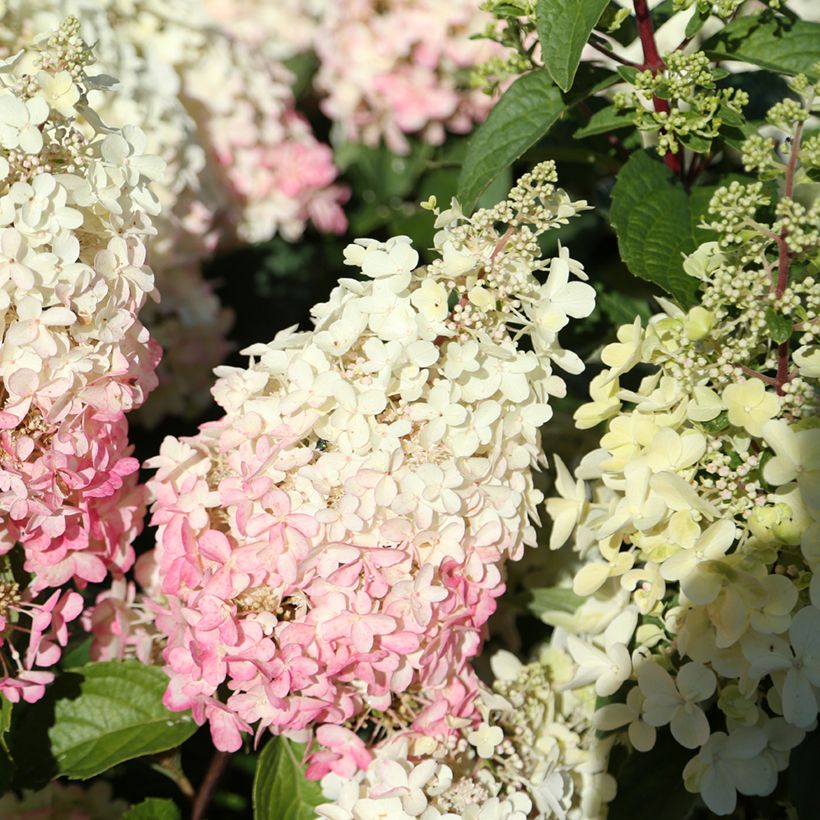

Plant habit
Flowering
Foliage
Botanical data
Hydrangea
paniculata
'HPOPR013’ CANDLELIGHT®
Hydrangeaceae
Cultivar or hybrid
Other Hydrangea Paniculata
Planting and care
Hydrangea paniculata 'Candlelight' is not very demanding of soil type, as long as it is not too heavy, not too chalky, and not too dry in summer. It requires a sunny, non-scorching exposure, or partial shade. At planting, place it in deeply worked soil. A good base fertiliser (horn or dehydrated blood) will promote the establishment of your plant and nourish it without risk of burning. If your soil tends to be dry, mix compost and potting soil with the soil, fill in the planting hole, and provide a surface watering basin. Mulch in summer to save on watering.
At the end of summer, we advise you not to cut the dry panicles, as they will protect the terminal shoots of the branches in winter. You can cut all the dry flowers at the end of February or at the first signs of good weather. Their spring growth is quite late.
Hydrangea paniculata should be pruned in late winter to produce more inflorescences and maintain a dense habit. Except for intentionally limiting the extension of the bush that has become too large, care should be taken not to remove the 2-year-old branches, as this would compromise the plant's development.
Hydrangea paniculata is more resistant to occasional water shortage and can easily establish even in non-acidic soil (although strongly alkaline soils should be avoided). They bloom generously from June until frost. When planted in the sun, their inflorescences take on autumnal colours.
Planting period
Intended location
Care
This item has not been reviewed yet - be the first to leave a review about it.
Summer-flowering shrubs
Haven't found what you were looking for?
Hardiness is the lowest winter temperature a plant can endure without suffering serious damage or even dying. However, hardiness is affected by location (a sheltered area, such as a patio), protection (winter cover) and soil type (hardiness is improved by well-drained soil).

Photo Sharing Terms & Conditions
In order to encourage gardeners to interact and share their experiences, Promesse de fleurs offers various media enabling content to be uploaded onto its Site - in particular via the ‘Photo sharing’ module.
The User agrees to refrain from:
- Posting any content that is illegal, prejudicial, insulting, racist, inciteful to hatred, revisionist, contrary to public decency, that infringes on privacy or on the privacy rights of third parties, in particular the publicity rights of persons and goods, intellectual property rights, or the right to privacy.
- Submitting content on behalf of a third party;
- Impersonate the identity of a third party and/or publish any personal information about a third party;
In general, the User undertakes to refrain from any unethical behaviour.
All Content (in particular text, comments, files, images, photos, videos, creative works, etc.), which may be subject to property or intellectual property rights, image or other private rights, shall remain the property of the User, subject to the limited rights granted by the terms of the licence granted by Promesse de fleurs as stated below. Users are at liberty to publish or not to publish such Content on the Site, notably via the ‘Photo Sharing’ facility, and accept that this Content shall be made public and freely accessible, notably on the Internet.
Users further acknowledge, undertake to have ,and guarantee that they hold all necessary rights and permissions to publish such material on the Site, in particular with regard to the legislation in force pertaining to any privacy, property, intellectual property, image, or contractual rights, or rights of any other nature. By publishing such Content on the Site, Users acknowledge accepting full liability as publishers of the Content within the meaning of the law, and grant Promesse de fleurs, free of charge, an inclusive, worldwide licence for the said Content for the entire duration of its publication, including all reproduction, representation, up/downloading, displaying, performing, transmission, and storage rights.
Users also grant permission for their name to be linked to the Content and accept that this link may not always be made available.
By engaging in posting material, Users consent to their Content becoming automatically accessible on the Internet, in particular on other sites and/or blogs and/or web pages of the Promesse de fleurs site, including in particular social pages and the Promesse de fleurs catalogue.
Users may secure the removal of entrusted content free of charge by issuing a simple request via our contact form.
The flowering period indicated on our website applies to countries and regions located in USDA zone 8 (France, the United Kingdom, Ireland, the Netherlands, etc.)
It will vary according to where you live:
- In zones 9 to 10 (Italy, Spain, Greece, etc.), flowering will occur about 2 to 4 weeks earlier.
- In zones 6 to 7 (Germany, Poland, Slovenia, and lower mountainous regions), flowering will be delayed by 2 to 3 weeks.
- In zone 5 (Central Europe, Scandinavia), blooming will be delayed by 3 to 5 weeks.
In temperate climates, pruning of spring-flowering shrubs (forsythia, spireas, etc.) should be done just after flowering.
Pruning of summer-flowering shrubs (Indian Lilac, Perovskia, etc.) can be done in winter or spring.
In cold regions as well as with frost-sensitive plants, avoid pruning too early when severe frosts may still occur.
The planting period indicated on our website applies to countries and regions located in USDA zone 8 (France, United Kingdom, Ireland, Netherlands).
It will vary according to where you live:
- In Mediterranean zones (Marseille, Madrid, Milan, etc.), autumn and winter are the best planting periods.
- In continental zones (Strasbourg, Munich, Vienna, etc.), delay planting by 2 to 3 weeks in spring and bring it forward by 2 to 4 weeks in autumn.
- In mountainous regions (the Alps, Pyrenees, Carpathians, etc.), it is best to plant in late spring (May-June) or late summer (August-September).
The harvesting period indicated on our website applies to countries and regions in USDA zone 8 (France, England, Ireland, the Netherlands).
In colder areas (Scandinavia, Poland, Austria...) fruit and vegetable harvests are likely to be delayed by 3-4 weeks.
In warmer areas (Italy, Spain, Greece, etc.), harvesting will probably take place earlier, depending on weather conditions.
The sowing periods indicated on our website apply to countries and regions within USDA Zone 8 (France, UK, Ireland, Netherlands).
In colder areas (Scandinavia, Poland, Austria...), delay any outdoor sowing by 3-4 weeks, or sow under glass.
In warmer climes (Italy, Spain, Greece, etc.), bring outdoor sowing forward by a few weeks.

































